At the age of 18, Mary Stancavage started to drink—hard. Freshly transplanted to San Jose after growing up alone with a schizophrenic mother in New York City, she reveled in her newfound freedom through weed, acid, and everything else the California locale had to offer. She’d enrolled in college and was doing quite well despite her love of the bottle. But by the time she hit grad school, Stancavage’s drinking had started to trip her up—so much so that she had to admit to herself that she was an alcoholic. Yet she drank on, seeking no help, until she was finally arrested for drunk driving and forced by court order into a 12-step program. Even this didn’t have much of an effect on Stancavage at first, though, in part because the nature of the 12-step process—a methodology with religious origins—just rubbed her the wrong way.*
“The word ‘God’ made my skin crawl,” says Stancavage—who today is slim with silver-blond hair, a sunny persona, and a calming speaking style—of the religious language baked into many of the steps. “I had absolutely no use for it.”
Stancavage tried to leave the 12-step approach behind, seeking out different means to aid her recovery from addiction, like force of will. But eventually she decided she needed a structured program and, despite any lingering reservations she may have had, joined another 12-step “room” (as participants call autonomous groups using the same overarching methodology). Luckily she found one that downplayed the divine notions she’d found disconcerting. She stuck with this less godly group, staying sober for 19 years and building a successful life. Yet even as she worked the steps, something didn’t feel right. Stancavage felt a continued sense of unease with the program.
“[They] took me to this certain point. Then I didn’t get any further,” she says. “The admonition in the program [in that situation is] to do your steps again … but it just wasn’t working.”
Hitting this wall made Stancavage feel judged within the program. She says there was always a sense for her that if you felt bad, you just weren’t doing it right—that she was being blamed for failing the steps. Stancavage muddled through this sense of discomfort and recrimination until she stumbled upon a different program, one that she personally found vastly more flexible, forgiving, and transformative. But this wasn’t some secular practice. This program was, paradoxically, also based in a religious tradition; it was a type of “Buddhist recovery” program.
Stancavage isn’t alone in turning to recovery groups derived from Buddhism. Over the past few years a growing number of seekers have done likewise, believing that these programs address the troubling issues they see ingrained within 12-step dogma. So many have done so that there are now a plethora of Buddhist recovery iterations to choose from. Given that many recovering addicts (like Stancavage) see spirituality as a major problem with 12-step practice, it may seem odd that they would turn to another religiously inspired system. But the tenets of Buddhism—to many practitioners an atheistic faith that stresses pluralistic and idiosyncratic practices—mean that these programs, although varied in their language and methods, are mostly united by a lack of stress on spiritual insights, experiences, or (in many cases) even set steps. And alongside other emerging 12-step alternatives, it shows the way toward a more diverse world of recovery options that can ideally complement 12-step rooms to better serve a greater number of addicts with varied needs.
Many people share Stancavage’s story of discontent with Alcoholics Anonymous and the 12-step program in part because almost every addict in America gets funneled into it, or a variation of it. Since AA officially introduced its system for alcoholics in 1939, it has become our nation’s consensus treatment for around 300 addictions and psychological disorders. By 2000, 90 percent of treatment programs in the United States were using the 12 steps, albeit with variations from room to room. So ubiquitous is the program that adages from its Big Book, like “The first step is admitting that you have a problem,” have basically become synonymous with addiction in our pop culture.
Yet for all the institutional and cultural faith placed in the program over the past 77 years, it just doesn’t work for everyone. Not that anyone expects the 12 steps to achieve 100 percent retention and permanent abstinence among its membership—addiction is hard to tame. But 95 percent of people who attend AA meetings stop doing so within their first year of involvement with the group (based on membership surveys from 1968 to 1996), and not everyone leaves because they’re succumbing to cravings or unprepared to face their demons. Some leave because of issues with its underlying principles.
Ex-12-steppers level all sorts of charges against the program, echoing and moving beyond Stancavage’s concerns. These complaints funnel into recovery resource clearinghouses like Alcohol Rehab and are echoed by addiction specialists like Pacific University’s Sarah Bowen.
“12-step is a lifesaver for innumerable people,” says Bowen. “[It’s] also not the best fit for a lot of people … It’s a barrier. Or they want something different.”
As in Stancavage’s case, the program’s express focus on theistic spirituality is a major issue for many people. Although the 12 steps are not expressly Christian, steps 2, 3, 5, 6, 7, and 11 still refer to belief in a higher power to guide one to “sanity.” Officially that higher power doesn’t need to be a deity. Yet for atheists, agnostics, and even some believers, the mere notion of relinquishing control to an agentic, superhuman force is a problem. Beyond spirituality, there is also the issue of the disease model of the program, which turns addiction into a chronic struggle, leaving many feeling disempowered or even doomed to relapse. And the idea that there’s a one-size-fits-all choreography of steps to sobriety is anathema to some—another qualm familiar to Stancavage.
Even the most disaffected 12-step rejecters admit that the program is flexible. The autonomy granted to groups allows them to shift or reinterpret language that some might deem problematic, leading to the diffuse ideas of a higher power that Stancavage encountered. And “take what you need and leave the rest” is by now an established mantra. Yet while this malleability is welcoming in a way, allowing a huge spectrum of people to benefit greatly from the programs, some, like Stancavage, just can’t fully get over certain underlying stumbling blocks. These people need a viable alternative to the 12-step model to feel right in their journey out of addiction—and for some, that’s Buddhist recovery.
Rather than focus on a dependency on higher powers, many Buddhist recovery iterations operate under the premise that the knowledge and ability to overcome addiction is waiting to be unlocked within an addict. That assertion is arguably an extension of the fundamental Buddhist doctrine that we’re all enlightened beings in waiting, just struggling to pull away the veils of ignorance, greed, and hatred that blind us from the truth all around us.
“The assumption in this model is that we already have the wisdom [to recover],” says Bowen, who in addition to her clinical psychology work is also a facilitator of the Buddhist-derived Mindfulness-Based Relapse Prevention program (MBRP). “It’s just clouded. We don’t need to look outside ourselves. We need to look inside ourselves and learn how to pay more attention to what we already know and our patterns of behavior. I think it’s very different [from the traditional 12-step program] in that way.”
Vince Cullen, a jovial recent retiree who, after years as a working-class bloke in southern England, now organizes the Buddhist-centric Hungry Ghost Retreats for recovery, explains that Buddhist doctrine also holds that all humans are recovering from cravings and aversions. He knows what he’s on about—after he took his last drink in his kitchen in 1996, he got involved in a group called East-West Detox in Reading, England, through which he found a related detox program at a Thai monastery in 1998. After immersing himself in a form of Buddhist recovery, he became a Buddhist monk in 2013. The concept of a “universal experience of perpetual recovery” that Cullen outlines means that in Buddhist programs, substance addictions aren’t seen as pathological aberrations that one may feel compelled to feel ashamed of, but instead part of a common human goal of overcoming.
Some Buddhist programs also stress the need for peer-mediated and situational treatment regimens—a flexibility endorsed by the belief that the Buddha taught (as Cullen paraphrases it) “a thousand different meditations for a thousand different people.”
It’s hard to say how many people have turned to Buddhist recovery treatments in part because of their anonymity and in part because they’re an emergent and disconnected field. With no sole progenitor, treatment teachings and programs develop separately, in all different shapes and sizes. They range from practices based on the works of Buddhist author Kevin Griffin, which all but adhere to the 12-step structure (save with an influx of Buddhist terminology and context), to Eight Step Recovery, or Noah Levine’s Refuge Recovery Centers, which draw from Buddhism’s eightfold path, an ethical framework for living. Even within one branch of Buddhist recovery, there can be intense variations and limited communication from one room or retreat to the next, making it harder to get data about them than about established 12-step programs.
Despite the intense variability between different Buddhist recovery iterations, based on a review of literature from or about them and conversations with folks like Bowen, Cullen, and Stancavage—all of whom work within different systems—it does seem that many of these groups are using similarly flexible structures and activities to realize a common philosophy of addiction. Usually these programs start, like AA, with the recognition that one has a problem and the determination to fix it. For Cullen, this came in the form of a vow to the monks at the Thai monastery he attended, made alongside an intense round of herbal detox—that being unique to his experience of Buddhist recovery. From there, he explains, the focus is on cultivating mindfulness, or self-awareness—constantly examining rather than just running from or denying cravings—usually reinforced through regular teachings that help addicts to analyze their behaviors through the lens of Buddhist thought and stories, meditations, and group engagement.
“It’s all sitting with and turning towards your suffering,” says Stancavage, who now leads Buddhist recovery programs (via Levine’s Refuge Recovery), “seeing that [your cravings are] not going to bring any kind of lasting satisfaction and [are] in many ways destructive. It’s all about stopping and pausing rather than just responding.”
Once addicts start dissecting their cravings, they look (with the help of meditation and a community of other addicts) for the triggers that set them off. From there, Buddhist recovery becomes far more flexible, using these same basic skills and supports, among other add-ons, to help people control or overcome their idiosyncratic triggers and constantly reaffirm their dedication to sobriety. For many malleable programs, it’s a continuum of practice rather than a progression of steps. When they relapse, there’s no sense of falling to the bottom of a 12-rung ladder or having failed (as Stancavage felt while working the program, although relapse-as-moralistic-failure is not part of 12-step doctrine). Instead practitioners just recommit and keep working on self-awareness, self-investigation, and making life changes, having learned form their stumble.
“Physical steps can be a distraction,” explains Stancavage. “[In 12-step programs] if you don’t feel good, then you’re doing something wrong … In Buddhism, if you’re not feeling fine, that’s ok. Now how do you live with that?”
Of course, just as 12 Step programs don’t work for everyone, neither do Buddhist approaches.
“Unless someone’s willing to shine a torch into those dark corners and accept responsibility for their own actions,” says Cullen, “then no, it won’t work.”
Cullen suggests that those craving clear instructions or those who believe in the power of external spiritual forces ought to try the 12-step program first. And Bowen notes that most of the people who come to Buddhist recovery programs are those who have tried the 12-step approach, often several times, and just keep hitting some kind of wall—a spot-on paraphrase of Stancavage’s experience—so they seek out a radical new direction.
There are numerous options beyond 12-step programs and Buddhist recovery (and the countless 12-step variants branded with different religious or cultural-traditional imprints), catering to those for whom neither approach is right. Women for Sobriety (which has dozens of groups across North America) for instance, beyond focusing on gender issues and creating a safe space for female addicts, concentrates on the development of self-confidence as treatment, contrasting the humbling sense that both 12-step and Buddhist recovery options can engender. And for those of any gender who want nothing at all to do with organized religion, the Secular Organizations for Sobriety (with hundreds of groups) offers a more assertive structureless atheism than Buddhist Recovery.
Buddhist recovery is just a particularly visible and growing example of the oft-unrecognized pluralism in recovery options, many of which seem to arise out of criticism of 12-step programs.
And Buddhist recovery doesn’t have to be an either-or choice over 12-step or other treatment programs. Bowen notes that she’s actually come across quite a few 12-steppers who’ve started doing Buddhist programs simultaneously with traditional AA programs as a means of strengthening their treatment or filling certain ideological gaps left by each.
“It’s at the same time a complement and an alternative,” she explains. “It goes together nicely with 12-step—the whole idea around acceptance and change is big in 12-step [as in Buddhism].”
Hybrid programs like 12-step Buddhist have even regulared this complementary approach, directly fusing Buddhist recovery and AA-based approaches by (for instance) stripping the mention of higher powers out of steps 5, 6, 7, and 11 and despiritualizing their remaining mentions, linking them instead to reliance on one’s community of supporters or the abstract concept of karma. This harmonization still follows the basic 12-step methodology, but infuses it with Buddhist language about universal suffering, prohibitions on shaming people for shortcomings (which can sometimes creep into 12-step groups implicitly, even if not sanctioned), and in many rooms, Buddhist-derived mindfulness exercises and meditation as well.
Taken together, the 12-step approach, alternatives like Buddhist recovery programs, and hybrids of the two will hopefully help cast a wider net for those who’ve fallen through the cracks in a world dominated by the AA model. That shouldn’t challenge the 12-step philosophy, but instead help to bolster its retention and sobriety numbers by better serving those who’d otherwise wash out. It can also help those who do get and stay sober via AA, like Stancavage, to overcome lingering qualms with the 12 steps and achieve a greater sense of fulfillment. Ideally the net result of this will be a more diverse and effective world of recovery options.
“Whatever works, works,” says Bowen. “[Some people] are really helped by 12-step and some people aren’t. I think both types need to be served.”















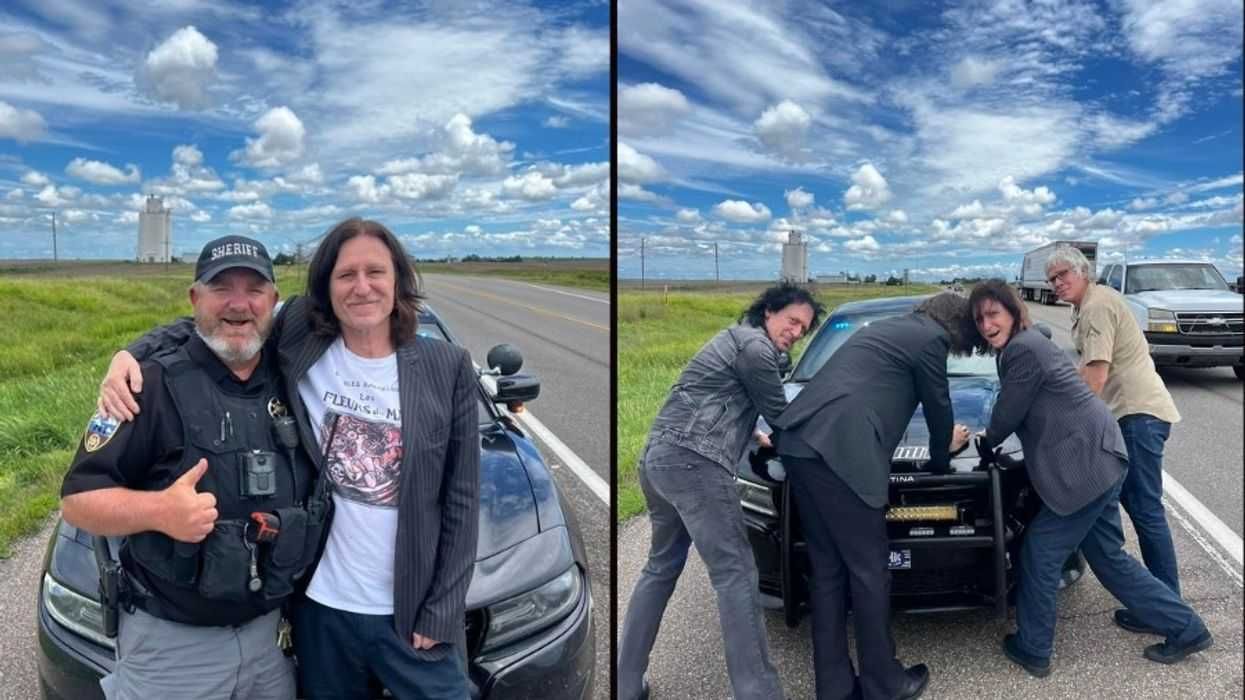

 Screenshots of the man talking to the camera and with his momTikTok |
Screenshots of the man talking to the camera and with his momTikTok | 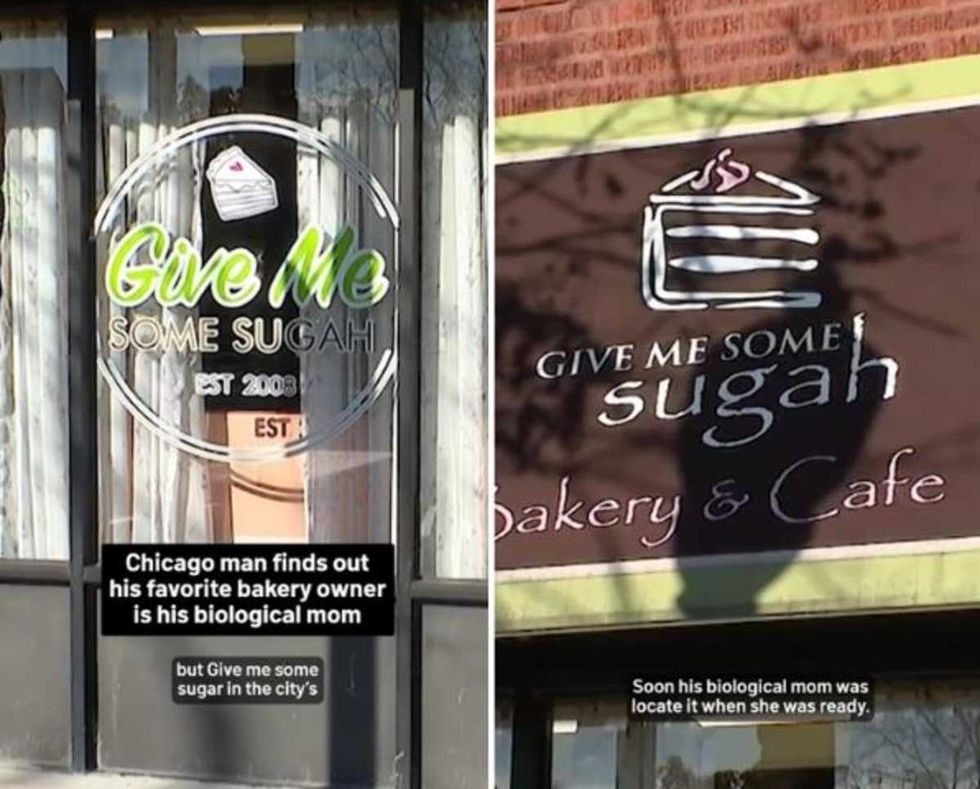 Screenshots of the bakery Image Source: TikTok |
Screenshots of the bakery Image Source: TikTok | 
 A woman hands out food to a homeless personCanva
A woman hands out food to a homeless personCanva A female artist in her studioCanva
A female artist in her studioCanva A woman smiling in front of her computerCanva
A woman smiling in front of her computerCanva  A woman holds a cup of coffee while looking outside her windowCanva
A woman holds a cup of coffee while looking outside her windowCanva  A woman flexes her bicepCanva
A woman flexes her bicepCanva  A woman cooking in her kitchenCanva
A woman cooking in her kitchenCanva  Two women console each otherCanva
Two women console each otherCanva  Two women talking to each otherCanva
Two women talking to each otherCanva  Two people having a lively conversationCanva
Two people having a lively conversationCanva  Two women embrace in a hugCanva
Two women embrace in a hugCanva 
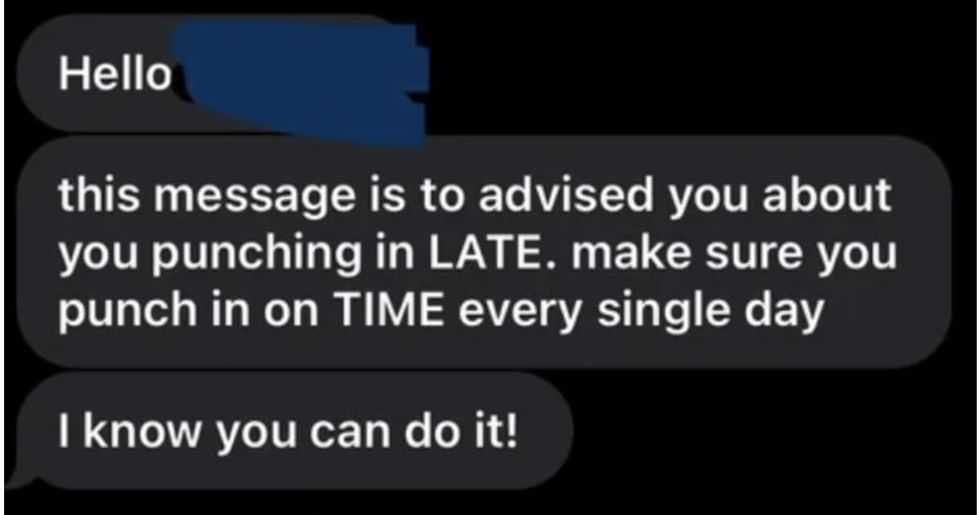 A reddit commentReddit |
A reddit commentReddit |  A Reddit commentReddit |
A Reddit commentReddit | 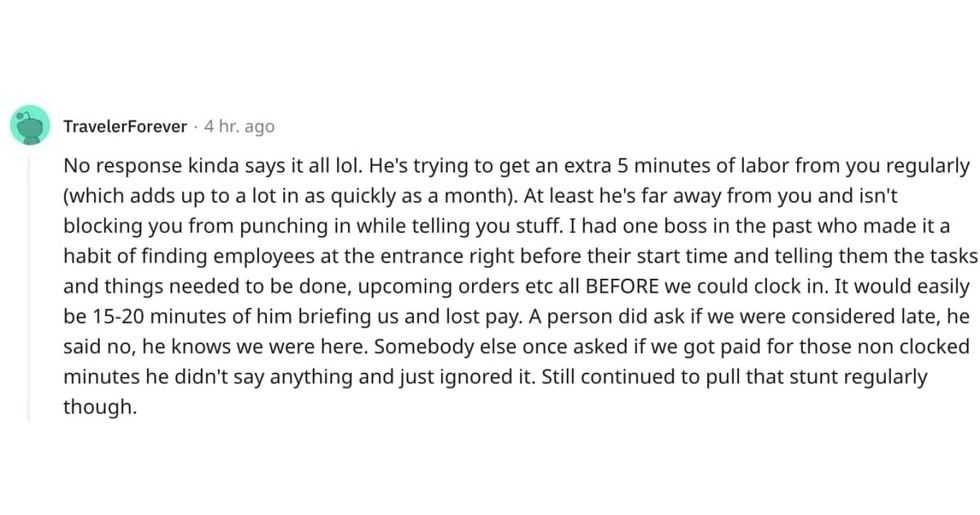 A Reddit commentReddit |
A Reddit commentReddit |  Stressed-out employee stares at their computerCanva
Stressed-out employee stares at their computerCanva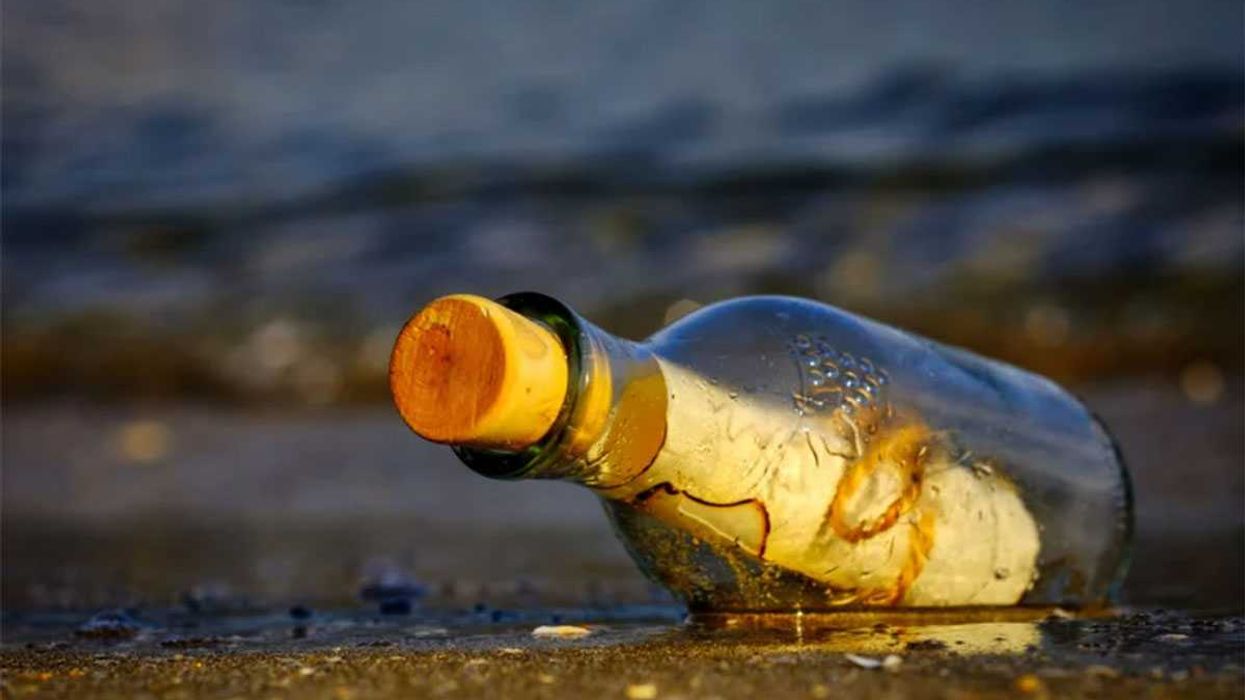
 Who knows what adventures the bottle had before being discovered.
Who knows what adventures the bottle had before being discovered. 
 Gif of young girl looking at someone suspiciously via
Gif of young girl looking at someone suspiciously via 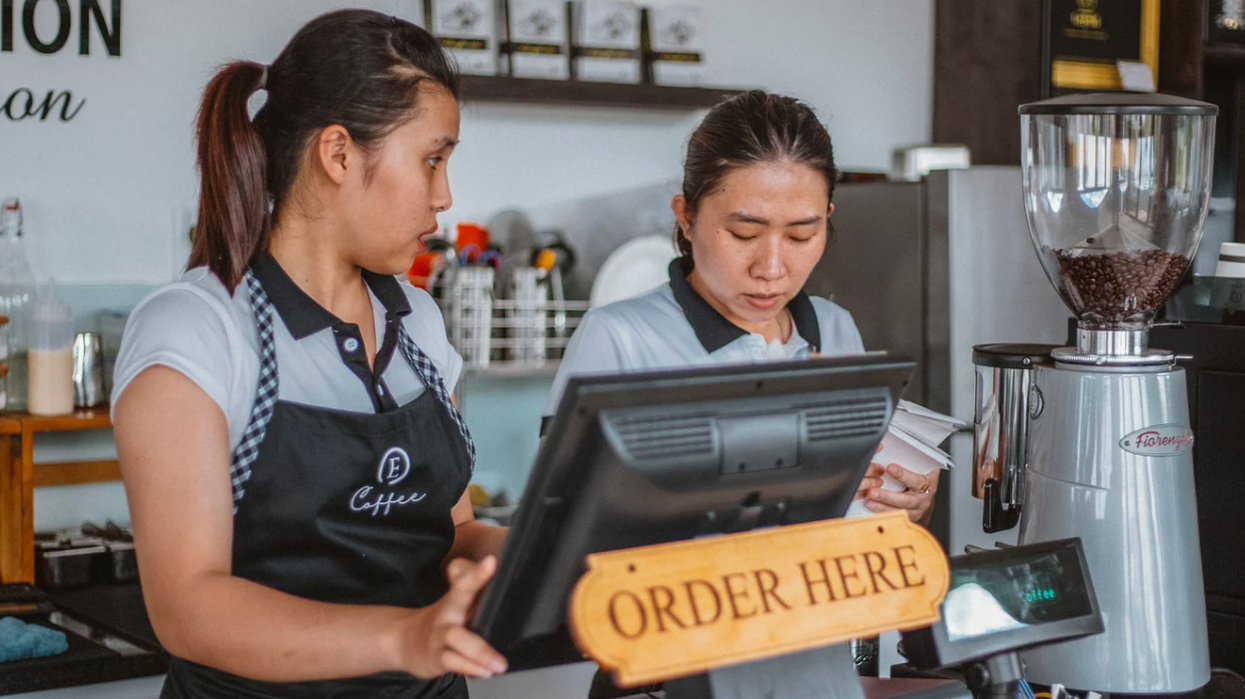
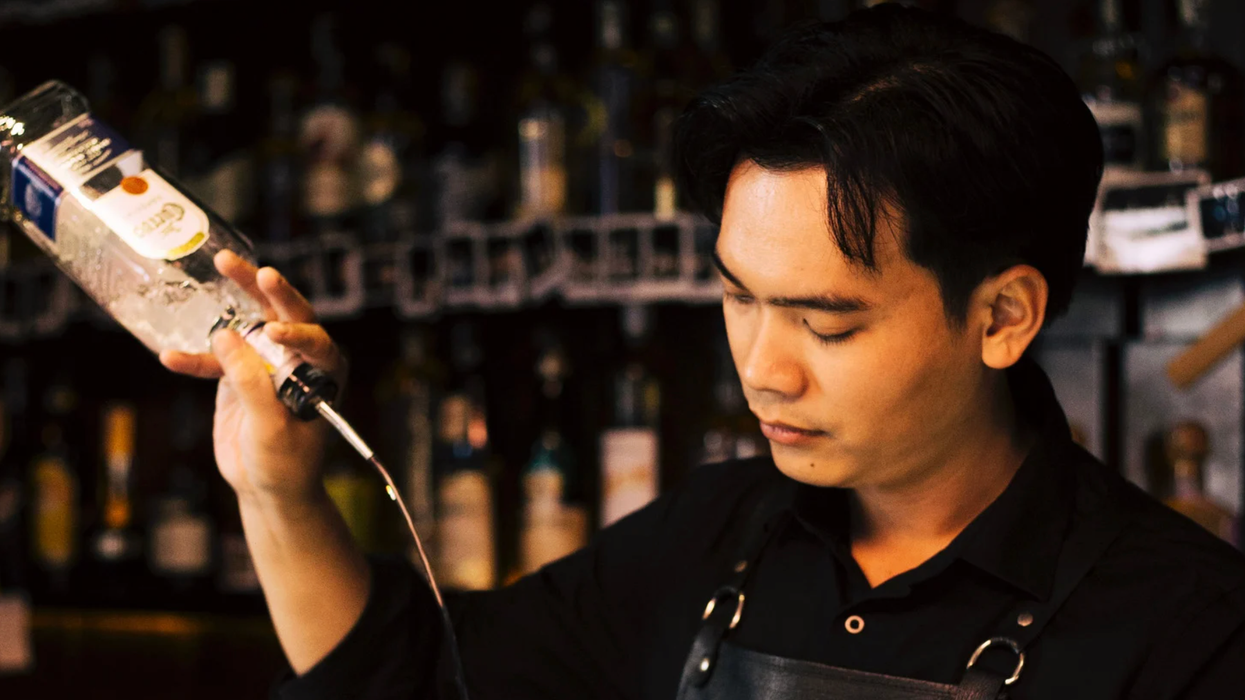
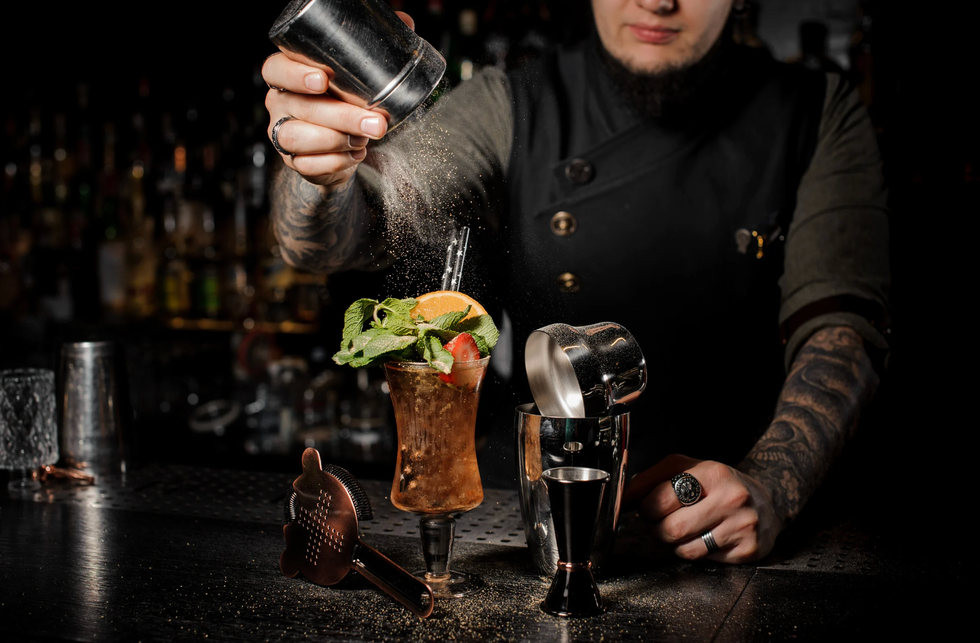 A bartender makes a drinkCanva
A bartender makes a drinkCanva